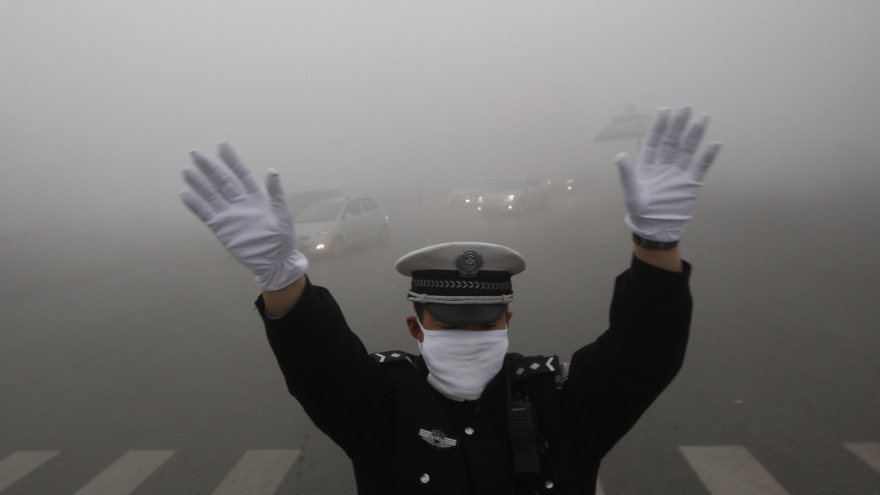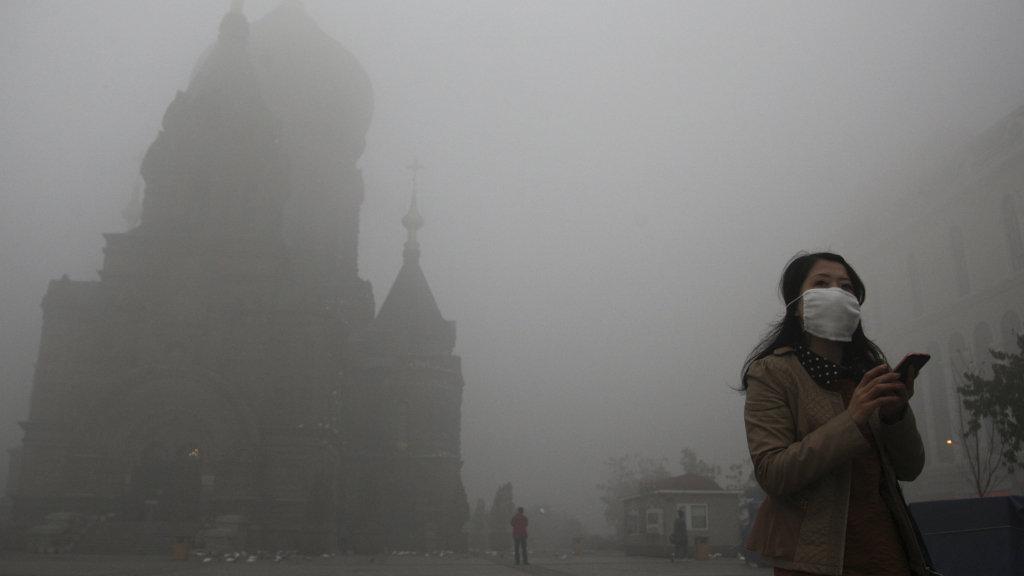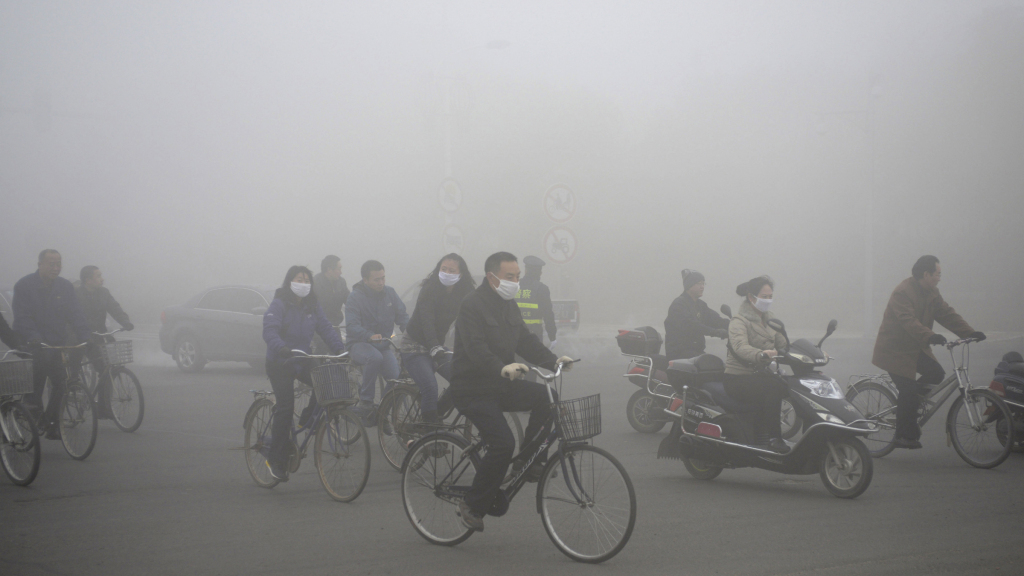
© Reuters/China DailyA traffic cop braves Harbin's haze.
It's getting colder in China, which means firing up the coal plants and turning the atmosphere into a toxic sauna.
And it's not surprising that China's first major "
airpocalypse" of this winter season was in Harbin, the capital of Heilongjiang province, in China's far northeast. Visibility in Harbin hit
10 meters (33 feet) today, as the city's air quality index (AQI), which measures fine particulate matter (PM2.5) per cubic meter, exceeded 500 - at least
20 times greater than levels the World Health Organization deems safe. And that was just in the "good" neighborhoods. In some areas, PM2.5 soared to 1,000. (For comparison,
PM2.5 exceeded 900 during Beijing's notorious airpocalypse last winter.) "You can't see your own fingers in front of you," Harbin's official news site noted,
reports Sinosphere, the
New York Times' new China blog.
That was severe enough to prompt local officials to close schools and warn Harbin's 11 million residents to stay home. And that wasn't just for their lungs. The noxious fug clouded visibility so much that it caused two pileups before the
police closed off highways (link in Chinese),
shutting Heilongjiang province airports as well. Meanwhile, patients with breathing problems mobbed Harbin hospitals, driving admissions up 30%, says Sinosphere.
What's behind the gray-out? Officials blame lack of wind and the burning of corn for the harvest, but the fact that central heating kicked in on Sunday was also a "
key factor," said Xinhua. In Heilongjiang, which is pretty much Siberia, temperatures are already near freezing. And it's only October. By January, they'll drop to between -12°C and -24°C (10°F to -11°F), though extreme lows of
-42°C (-44°F) aren't unheard of.
Heating's a big problem in China. As a study published in May 2013 showed, particulate matter in air north of the
Huai River is 55% higher than in the south - and
life expectancies 5.5 years shorter. During the 1990s alone, that cost 500 million residents of northern China 2.5 billion life years, said the researchers.
That's probably due to two policies. First, in order to make the frozen north more hospitable, in 1950 the government determined that those who lived north of the Huai River and the Qinling mountain range could receive coal-powered heating for free. In addition, the
hukou (household registration) policy, which makes it difficult for residents of one area to pick up and move to another, means many residents can't flee to cleaner climes. The government no longer provides coal for free, though it
does subsidize it. And though China's switching from
coal-powered heating to natural gas, that transition will be a slow one. Here's a look at what to expect in the mean time:

© Reuters A woman checks her phone in front of San Sophia church.

© ReutersIt wasn’t just Harbin that was hit. Bikers in nearby Daqinq city faced the “fog” as well.



Sounds and looks like America in its 'industrialization' process. Nice to think that their govt is as useful as our own in managing the problem.